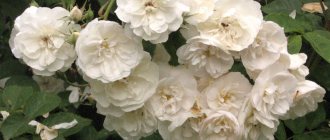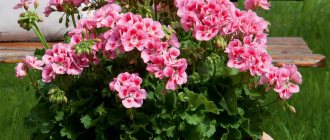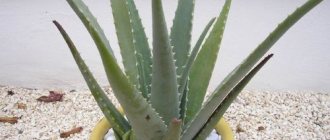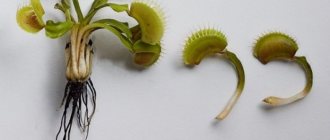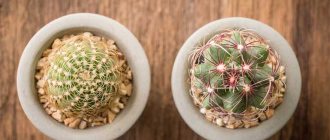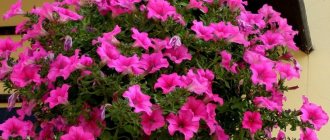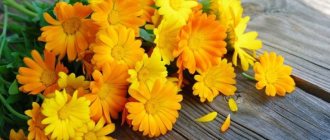The unpretentious Petunia flower with excellent decorative properties can become a bright decoration for the garden and home. It has gained popularity among gardeners due to its lush and long-lasting flowering. From bushes with a varied colorful palette of large buds, you can create a separate composition or plant it together with other flowering plants.
Petunia: care and cultivation at home is the topic of our article. We will give recommendations on its cultivation and propagation, tell you about the decorative properties of its varieties, and how to achieve lush and long-term flowering.
Abundance of forms and varieties
Petunia began to be specially grown back in the 18th century. Many new varieties and hybrids have been developed. Some varieties are suitable for flower beds and borders, others decorate balconies and terraces, alpine slides, and spread like a flower carpet on the ground. Depending on the size of the flowers and appearance, all varieties of petunias are usually divided into several groups:
- multifloral petunia
- grandiflora petunia
- floribunda
- ampelous.
Multifloral petunia
These varieties have a huge number of small flowers with a diameter of 7 cm. The buds grow very densely and almost completely cover the bush. It begins to bloom early and blooms until the first cold weather. This is a fairly unpretentious plant, rain and sun. Blooms profusely. The colors are both variegated and monochromatic. These petunias are compact and quite low; they are used to decorate flower beds and borders in the form of a carpet flower bed. They are also often cut, turning them into a flower ball. Varieties of multi-flowered petunias that are often grown are the following:
Snowball . Variety with white flowers. Height 30 cm, bud diameter 5 cm. Blooms in June and continues to bloom until the first frost. A variety of flowers that is resistant to many vagaries of weather.
Alderman . Height 30 cm. Diameter of blooming flowers 5 cm. Dark blue flowers. It blooms from June until frost.
Debonair F1 Black Cherry . Hybrid American variety of petunia. Grows 30 cm tall and wide. Flowers with a diameter of 6–7 cm are burgundy with black tints. Plants bloom continuously.
Duo Summer . Terry multi-flowered petunia with spreading bushes 20 - 30 cm. Small leaves, 7 cm buds. Pink flowers. Blooms from June to the end of September.
Large-flowered petunia (grandiflora)
The most common group. Unlike the first petunia, the large-flowered variety has larger flowers, but there are fewer of them. It does not tolerate bad weather well, so they prefer to grow it on terraces or balconies. The following varieties are popular:
Corduroy Parade . Hybrid 25 cm in height. The flowers are burgundy-red.
Sonata . Snowy white flowers 12 cm in diameter, simple flower shape.
Pink sky . The flowers are bright pink. Large buds.
Picoti . Height 30 cm. Flowers 7 cm. Color can be red, crimson or blue with a white border.
Ampelous petunias
They are distinguished by long, falling shoots, densely covered with buds. Ampelous petunia has its own peculiarities.
- The length of the growing shoots is from 30 to 120 cm. They fall down, so it is preferable to grow them in hanging pots.
- The size of petunia leaves depends on age; the older, the larger.
- Flowers are formed along the length of the shoot. They have a bell shape.
- One plant can produce buds of different colors and sizes.
- Rich color palette. The petals are most often two-colored. The inside is brighter.[BR]They like to decorate balconies, terraces, and pillars with hanging plants. Blooms from June until frost.
There are many varieties of ampelous petunia. The popular ones are:
Black velvet has an unusual color. 25 – 30 cm, large flowers 8 cm in diameter, black velvety color.
Mashenka is a densely branched variety, the length of the released shoots is 80 cm, the flowers are funnel-shaped, 6 – 7 cm in diameter. Color pink, yellow center.
The Snow Queen is a hybrid, its shoots reach 80 cm. The flowers are snow-white with a pleasant smell.
Explorer is widely used. Wide variety of colors. Stems 1.5 meters. The flowers are large, with a waxy structure, which allows them to withstand bad weather.
Floribunda
Petunia floribunda falls between multi-flowered and large-flowered petunias. Tolerates bad weather well. Flowers 10 cm. Floribunda looks best in mass plantings. Grows well in both sun and shaded areas. Popular varieties:
Sonia is a series that includes 11 varieties. The plant is 25 cm, the bush is very compact. Flowers with a diameter of 8 cm, the color can be different: purple, white, red, pink. Can be two-color.
Milky Way - petunia with shoots 25 cm. Snow-white flowers with a pink star inside, reaching 10 cm. They begin to bloom in May and until the end of autumn frosts. They withstand the vagaries of the weather well and do not lose their shape after rain.
Angora is a hybrid variety with erect shoots up to 45 cm in height. Blooms from early June until frost. The flowers are 7 cm in size, with wavy edges, double. Pink color.
Celebrity - a series of hybrids includes 13, both single-color and multi-colored colors. Plants resistant to rain and cold, no higher than 30 cm. There are many small buds on the shoot. It is better to plant in groups.
Petunias in garden design
Petunias are easy to care for, but finding a suitable place for them in the garden is not an easy task. They are very diverse in color, often the flowers have several shades, and if you plant them in flower beds haphazardly, you will end up with a clumsy motley pile that will be annoying.
If the flower garden is small, it is better to plant varieties of the same shade of different heights. In the center - high, at the edges - low. In this case, you will get a volumetric composition. Another option is varieties that are contrasting in color, for example, yellow and purple, orange and blue, white and black.
Purple petunia. Photo: globallookpress.com
Petunia surfinia. Photo: globallookpress.com
Petunia. Photo: pixabay.com
Calibrachoa, or mini petunia. Photo: globallookpress.com
You can plant petunias in an area with bulbous spring flowers - tulips, daffodils, crocuses and hyacinths. At first, they will complement the bright flowers of primroses with lush greenery, and then, when the bulbous flowers fade and dry out, they will hide unsightly bald spots.
If you like mixed compositions with many species, then plant petunias in company with calendula, marigolds, gillyflowers, verbena, snapdragons, pelargoniums or coleus. They look good in the company of cereals. And, of course, the classic option - petunias with silvery cineraria.
Ampelous petunias will be appropriate in flowerpots - they can be placed on the porch, near the gazebo, bench or patio. They look great in hanging flower pots, which can also be used to decorate a gazebo or veranda.
Don't have a dacha? This is not a reason to give up petunias - they grow well on the balcony in boxes or the same hanging flowerpots.
But keep one thing in mind: the soil in the pots dries out very quickly. If you constantly live in a country house (or it’s a country house), this is not a problem; the plants can be watered at any time. Weekend gardeners always have a problem with watering, so add more hydrogel to the soil for the pots - it retains moisture in the soil for a long time.
And try to hang pots with petunias in a quiet place - the wind can fray them very much, and the plants will lose their decorative effect.
Growing petunia seedlings
To get strong and high-quality seedlings, you need to be careful when choosing containers and soil. The seedling boxes should be made of wood, plastic or ceramic. Containers should be wide and of medium depth. Drainage holes are required. You can use plastic disposable food containers.
It is necessary to put drainage at the bottom of the container. You can use expanded clay, pebbles. You can buy special drainage at a flower shop. This is necessary so that air passes to the roots and water does not stagnate in the soil.
Then the seedling containers should be disinfected. You can use Formalin or a solution of potassium permanganate. After processing, the container should be thoroughly rinsed with water. If seedlings are planted in a wooden box, a layer of paper, preferably thick paper, should be placed on the bottom.
Sowing seeds in peat tablets
If you sow petunia seeds in peat tablets, you will not have to pick up the seedlings afterwards. You can immediately plant seedlings on the site. The advantage of peat tablets is that peat is air and water permeable. In addition, peat tablets contain useful elements necessary for the growth of seedlings.
- Place the tablets in a container and fill with water.
- After 10 minutes, the tablets will swell, they will increase in height, but remain the same in width.
- Wait another 5 minutes and drain the excess water from the container.
- Using tweezers or a toothpick, place the seed into the recess of the peat tablet.
- Cover the container with a lid and place it on the windowsill. The room needs to be warm.
- Don't forget to spray the tablets with water.
- Open the lid from time to time to ventilate the container.
- Remove excess moisture from the walls and lid of the container.
Seed selection
Petunia seeds are sold in two types:
- in granules;
- in bulk.
Seeds in granules are more convenient and have good germination. It is worth deciding on the timing of sowing them for seedlings.
It should be remembered that two months pass between sowing and the first flowers. They begin to plant seedlings from the second half of February until mid-March. This depends on whether it is possible to provide the seedlings with additional lighting, since there is still insufficient daylight in February.
For petunia seedlings, neutral or slightly acidic soil is needed. It should be a nutritious mixture, loose, that retains moisture, but does not get wet. You can purchase the mixture in the store. Universal ready-made substrate Stender. For 5 liters of Stender you should also add half a liter of ash, a large spoonful of potassium sulfate, 250 grams of perlite and mix well.
Another option for the mixture: part garden soil, part sand and two parts peat. Stir, sift through two sieves of different sizes and pour over a strong solution of manganese. Or use the Previcura solution.
Drainage is poured into the bottom of the container, then a 6 cm layer of earthen mixture is added. There should still be at least 3 cm left to the end of the sides. Petunia seeds are very small and difficult to sow. Granulated seeds are more convenient. They can be taken with tweezers and placed on the ground in rows.
The seeds are not deepened; they are simply sprinkled with a two-millimeter thin layer of soil. If you use loose small seeds, you can sow them in three ways:
- use of sand;
- use of snow;
- using a toothpick.
The first method is to mix the seeds with sand and spread them over a substrate that has been watered in advance. The crops are slightly moistened on top using a spray bottle and sprinkled with a millimeter of soil. You cannot use a watering can, as such watering will greatly deepen the seeds into the soil.
The second method involves sowing petunia seeds on a thin layer of snow, laid in a 1 mm thick layer on the surface of the substrate. Seeds are poured onto the snow and distributed over the entire surface using tweezers. When the snow melts, it will draw the seed material to the required depth and moisten the crops. And you won’t need to water or sprinkle soil on top.
The third method of sowing is using two toothpicks. The seeds are poured onto a white sheet of paper. Pick up the seed with one toothpick, with the tip moistened with water, and shake it off with another toothpick, moisten it on top and sprinkle it with substrate.
Having finished sowing, cover the containers with transparent material and take them to a warm room where there is enough light. With a temperature of 25 degrees.
Seeds can be planted in special seedling cassettes. You can select by the number of cells. A cassette with cells is useful for repeated use, and the seedlings in them do not need picking. Experts advise choosing fairly spacious cells with a height of 10 cm.
The cells are filled with substrate. Caring for sprouts in cassettes is the same as caring for seedlings in regular boxes. Some gardeners plant seeds in special peat tablets. It is easiest to plant pelleted seeds in them. You need peat tablets 4.5 cm in diameter. They are placed in water to soak. Next, excess liquid is removed, and the tablets are placed in a container with high edges.
You can use cassettes. Place one seed in each tablet and water it with a pipette to soften the seed shell. When the shell gets wet, you should smear it with your fingers so that the seed germinates faster. The plantings are covered with transparent material.
It is believed that such seedlings are easier to care for; they do not need to be replanted and it is easy to understand when they need watering. In addition, with this method, the germination rate of petunia seeds is much higher.
Planting times depending on region
Petunias love warmth, so they can only be planted when the ground has warmed up well. To calculate the ideal time for sowing, it is worth subtracting 2.5-3 months from the planting time. Then the petunia will bloom at the time planned by the gardener. It is worth considering that petunias with large flowers and tall growth should be planted earlier than small-flowered ones.
In the Urals
The Ural region is worth the wait. Sowing petunias for seedlings should begin in March. It will be possible to transplant the sprouts into open ground in late May - early June. Previously planted petunia runs the risk of overgrowing and will produce beautiful flowering.
In Siberia
In Siberia, the timing of sowing seedlings will shift by a week - to the third ten days of March. Do not forget that if you keep seedlings in a greenhouse or on a windowsill for a long time, it will be difficult to replant them, and the risk that the plant will contract diseases will increase.
In the Non-Black Earth Region and Leningrad region
For the Leningrad region, it would be ideal to plant petunia seedlings in February. It is better to choose the end of the month, or at least the beginning of March. By planting petunia at this time, you can get lush and healthy seedlings. The same applies to non-Black Earth regions.
In outskirts of Moscow
The beginning of sowing in the Moscow region almost coincides with the season in the Leningrad region. Planting petunia seeds for seedlings begins in February. Rotki can be planted in the ground at the end of April.
Seedling care
If everything is done correctly, the first shoots will be visible in a week. Care for flower seedlings is very important:
- watering;
- feeding;
- lighting;
- temperature regime;
- dive;
- topping;
- control of diseases and pests.
Watering
Petunia seedlings need moderate humidity. The soil should not be wet. This can lead to rot and disease. But overdried soil is also detrimental to seedlings.
Young plants need drip watering. For watering, use a syringe or pipette, pour at the root, do not get on the leaves. You can pour water over the wall, or use a tray for watering. Water for irrigation needs to be settled, at room temperature, or slightly warm.
Two minutes before watering, add lemon juice to the water. Water the flowers, depending on the weather. If the day is sunny, water in the evening. If the weather is cloudy, then watering is carried out in the morning.
Top dressing
Feeding young plants is also very important. It is recommended to apply fertilizers systematically. In the first two weeks, you will need to spray the petunias with a weak solution of potassium permanganate or Pervikura. After the appearance of the fourth leaf, the plants are fertilized with a solution of yellow “Kristalon” in the amount of half a tablespoon per 5 liters of water.
Fertilizing can be done either by foliage or by adding fertilizer to the soil. For foliar feeding, use “Kristalon” and “Uniflora micro”. Seedlings are fed three times a week, using two methods alternately. After picking, it is recommended to use fertilizers that stimulate root growth. Such as “Aquarin”, “Solution”, “Plantofol”. Everything is prepared according to the instructions.
Temperature
Petunia seeds germinate at 25 degrees. If the temperature is low, the seeds simply will not sprout, and if it is higher, the plants can become very stretched and begin to hurt. After the shoots appear, you will need to open the plants twice a day, starting at 20 minutes.
The covering is completely removed when the plants grow to it. The temperature is reduced to 20 degrees during the day and to 16 at night.
Lighting
Flowers need lighting almost around the clock. Good lighting allows young plants to grow well and speeds up the flowering period. The duration of the required daylight hours is 12 hours. The lighting is turned on in the morning at 7 o'clock and turned off in the evening at 22 o'clock.
Additional lighting is installed at a height of 20 cm from the seedlings. For this purpose, LED, fluorescent, and phytolamps are used.
Picking
Picking seedlings is carried out only if they grew in common boxes. For picking, select 250 ml cups with holes for drainage. When the shoots are 5 cm in height, begin picking.
- Using a sharp garden knife, plant the plants to a depth of 3 cm. The knife is inserted at an angle of 45 degrees. It turns out that by pinching off a piece of the root, the development of the root system is stimulated.
- The flower is placed in a separate container.
- Add substrate to fill the voids. Watered.
- The temperature is reduced by three degrees for a week, and sunlight is avoided.
- You can feed only after a week and a half.
If the seedlings are grown in tablets, then the seedlings can be planted in an individual container along with it.
Pinching
Pinching is done for all varieties of petunias, except for hanging varieties. It consists of removing a piece of the stem at the 4th and 5th leaf along with the growing point.
Young shoots will emerge from each leaf axil, and in the future such plants will bloom profusely. After half a month, a second pinching is carried out. To get a lush bush, pinching must be done several times.
Improper watering and excess moisture can lead to blackleg disease. A dark spot forms at the base of the shoot, the tissue underneath becomes soft and rots. A constriction forms and the plant falls.
All diseased seedlings must be destroyed, and the soil must be watered with a solution of potassium permanganate or Formalin.
Often, due to excess moisture, petunia seedlings may experience iron deficiency. In this case, iron chelate, which is contained in the Ferovit product, should be added to the soil. Conversely, excessive dryness leads to the appearance of spider mites, which settle on the leaves. For the fight, special drugs are used: Neoron and Fitoverm.
Winter care
The bushes in containers are moved to a warm room with good lighting. In winter, the air temperature is maintained at 15-20°C, but for some varieties it should be 5-10°C. If you need to preserve bushes that grew in the ground, and not plant seeds, then they are transplanted into suitable pots in early September. At the same time, shoots are shortened to 10-15 cm, dried and damaged leaves and dried flowers are removed. The crop does not need to be watered and fed frequently in winter. Moisten the soil 2-3 times a month. The air is humidified more often and good lighting is provided. With this care, some types of petunia can bloom again in February. Then watering and fertilizing with potassium can be increased. The bush is taken outside in late spring.
Petunia transplant
When, after the picking, the seedlings take root and begin to grow, they begin to prepare them for planting. The plant is hardened for two weeks and accustomed to fresh air. Start with 15 minutes outdoors. And just before planting, flowers should be exposed to the air around the clock.
Flower planting begins from the second half of May until mid-June. Petunia is a fairly unpretentious plant, but still prefers sunny areas. Prefers loamy, fertile soil. The soil is dug up, humus or compost is added, and weeds are removed.
Flower seedlings are planted when there is no sun, or in the evening.
The holes should be ten cm deep. The distance depends on the selected variety. Between large-flowered ones - 23 - 25 cm, between small-flowered ones - 18 - 20 cm. Ampelous ones are planted 28 - 30 cm from each other. Before planting, seedlings are watered for better removal from containers.
To avoid damaging the roots, plant them together with a lump of earth. After planting, the flowers are watered, and the soil nearby is mulched with humus or peat. Petunia should be protected from strong sunlight for several days. This can be done using canopies made from cardboard boxes.
Soil preparation
Growing petunias from seeds involves preparing the soil.
The soil in which to germinate seeds must be poorer in composition than the soil for seedlings. This can be done by diluting the finished soil with coconut substrate by 2 times. Fill the boxes with substrate, leaving 1.5-2 cm to the top of the box, so that when ventilated, young sprouts are protected from temperature changes. Compact the soil somewhat. Pour it with a solution of potassium permanganate.
On a note! After checking the acidity of the soil, add perlite and vermiculite to it; these are leavening agents that help the soil retain water better.
You can add Epin, it helps plants grow more intensively. Add 1 ampoule of Epin to 1 liter of water, spray the soil with the solution. You can add powder - this is crushed silt, together with peat it ensures excellent germination of petunia seeds.
You can also add uniflor micro, which contains microelements for feeding seedlings.
Flower care
Care consists of:
- in timely watering;
- in systematic feeding;
- in the picking of withered flowers.
Petunia should be watered only in dry weather, preferably in the evening. The plant does not like excessive humidity and when water stagnates in the hole. It is enough to simply moisten the soil around the roots a little. The next day, the ground is loosened so that a crust does not form, and the weeds are removed.
The beauty and duration of the flowering period of petunia depends on regular feeding. After 10 days, the plant is fertilized for the first time. Use nitrogen-containing fertilizers. Nitroammophoska has proven itself well.
During the formation of buds, potassium salt and superphosphate are used. You can use wood ash from a fire. If the leaves begin to turn yellow and fall off, the plant may have developed chlorosis. This means he lacks iron. In this case, Ferovit will help. They spray petunia 3-5 times with a period of three days.
Flowers that have bloomed are removed. This pushes the plant to form new buds and prolongs flowering. Using the pinching procedure, the bush is given a beautiful shape.
You can make a bush in the form of an unusual flower ball with many blossoming buds.
Diseases and pests
- Petunias are sensitive to powdery mildew , so don't ignore the appearance of white spots on wilted leaves or stems.
- In addition, flowers should be regularly checked for aphids and whiteflies .
- When grown outdoors, plants often suffer from slugs .
- If summer flowers in pots and boxes suddenly develop yellow leaves, this may indicate an iron deficiency (chlorosis), which can be corrected by adding ammonia fertilizer.
Collecting seeds
If you need petunia seeds for seedlings next year, you should select several lower buds on the bushes of the selected varieties. The process of seed formation in these buds is faster. After 60 days from the formation of buds, the seeds will ripen.
The capsules are cut off, the seeds are poured out and stored at room temperature. Each box contains about one hundred seeds. They are very small, about half a millimeter. Then the seeds ripen at home for four months. They do not lose their viability for about four years.
It is best to distribute the seeds into bags and label which variety so as not to confuse them.
What do petunia seeds look like?
After flowering stops, a box forms in place of the flower . The box contains seeds. In petunia they can have a brown or yellow tint. They can also be black in color, depending on the variety. Petunia seeds are tiny in size. Because of this, it is easier to buy professional seeds. But if you have petunia growing on your property, then you need to know how to collect petunia seeds at home yourself.
Reproduction
Most often, petunia is propagated using seeds, however, the cutting method can also be used. This option is especially suitable if your petunia is a hybrid type. To get a full-fledged cutting, in the summer you need to cut off several side shoots from the mother plant, each 7-9 cm long. There should be at least 4 leaves on the shoot.
Growing is done as follows: the cutting must be stuck into a separate pot with soil, and the container is covered with a glass jar until rooting (see photo). As soon as the cutting takes root, the cover is removed, and further care is carried out in exactly the same way as for an ordinary seedling.




